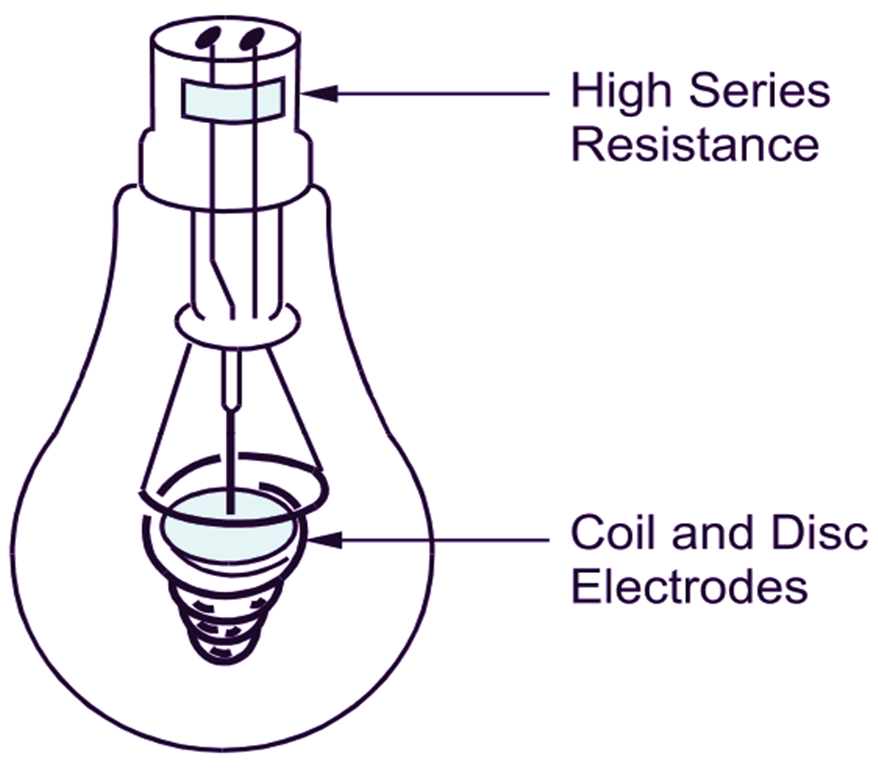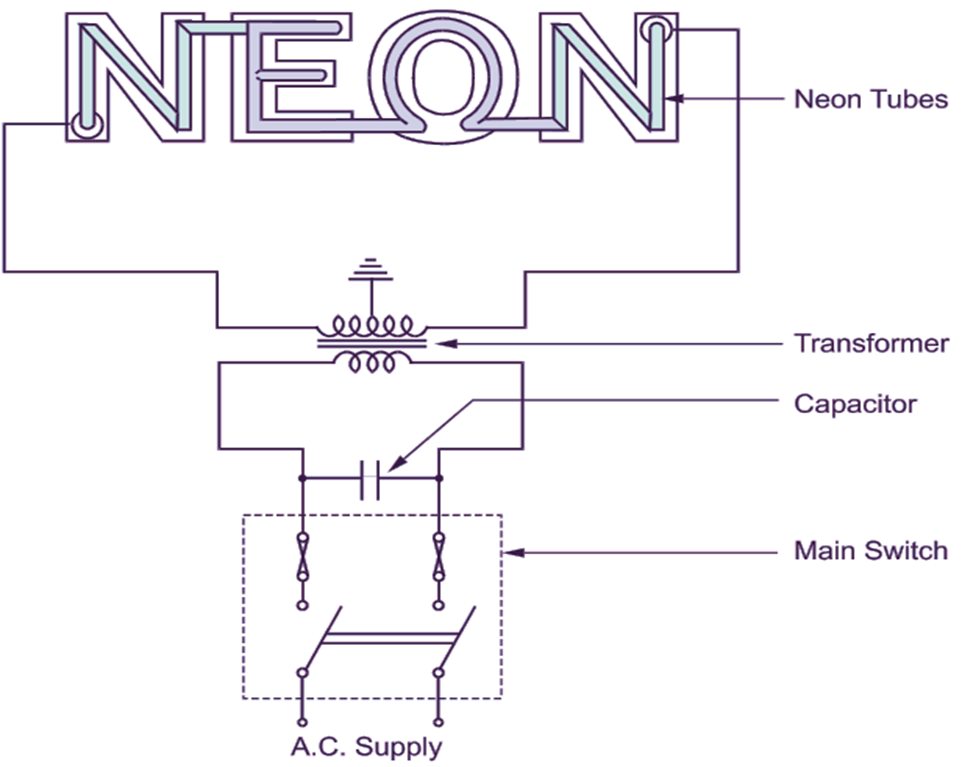In this topic, you study Neon Lamp – Working, Construction & Circuit Diagram.
It uses glass bulb of the size similar to that of an ordinary incandescent lamp.
Construction of Neon Lamp
The bulb is filled with the rare gas neon at a pressure of about 10 mm of mercury. Pure iron electrodes in the form of two thick parallel wire spirals or a tapering spiral and a disk or two flat plates are placed close together (but not touching each other) in the glass bulb (Fig. 1). A series resistance of about 2000 Ohms is mounted inside the cap.

Fig. 1: Neon lamp
Operation of Neon Lamp
On switching on, the lamp lights with a luminous orange red glow. With d.c., glow is around the cathode (negative electrode) but on a.c., both the electrodes glow with equal intensity. Ballast resistance in the cap reduces the fluctuations in current drawn by the lamp.
Applications of Neon Lamp
Such type of neon lamps are used only when a small amount of light is required e.g. a night lamp or a pilot lamp. They are available for the voltages as low as 110 V, a.c. or 150 V d.c.
Advantages of Neon Lamp
- Long life (about 5000 working hours).
- Low power consumption of the order of 3 to 5 W.
Disadvantages of Neon Lamp
- Low efficiency.
- Cannot be used for ordinary lighting purposes.
Special Applications of Neon Lamps
Neon Signs :

Fig. 2: Neon sign tubes
Construction of Neon sign
These are the neon lamps in the form of long tubes (Fig. 2) of desired shape filled with neon gas at a low pressure. Metal electrodes with the coating of electron emissive material are provided at each end of the tube. A transformer having a high internal reactance is used to provide a high voltage ranging between 1500 to 6000 V depending upon the length and internal diameter of the tubing, gas pressure and the type of gas filling. The center of the high-tension winding of the transformer is connected to earth so as to keep the maximum potential to earth of any part of the high-tension circuit within permissible limits. Capacitors may be connected across the primary terminals of the transformer for improvement of power factor and elimination of radio interference.
Operation of Neon sign
On switching on, a high voltage (about 50 % higher than the normal working voltage across the tube) is applied across the electrodes which starts the discharge. Once the discharge starts, this voltage is reduced due to high internal reactance of the transformer, thus stabilizing the discharge.
Applications of Neon sign
Neon signs are mainly used for advertising and decoration purposes. By varying the composition of the glass and adding substances to the neon gas, a wide range of colours can be obtained. Other inert gases like argon (for blue colour) and helium (for yellow colour) are also used frequently depending upon the colour requirements.